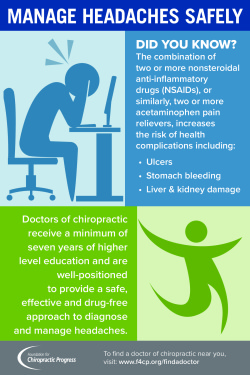Address Neck And Back Pain By Identifying The Everyday Routines That Could Be Contributing To It; Small Changes Can Pave The Way To A Life Without Discomfort
Address Neck And Back Pain By Identifying The Everyday Routines That Could Be Contributing To It; Small Changes Can Pave The Way To A Life Without Discomfort
Blog Article
Web Content Writer-Bates Landry
Preserving proper stance and preventing common mistakes in everyday tasks can significantly influence your back health. From how you sit at your desk to just how you raise heavy things, small adjustments can make a huge distinction. Imagine a day without the nagging pain in the back that hinders your every step; the remedy could be simpler than you assume. By making a couple of tweaks to your day-to-day practices, you could be on your way to a pain-free presence.
Poor Pose and Sedentary Lifestyle
Poor stance and an inactive lifestyle are 2 major factors to pain in the back. When you slouch or suspicion over while resting or standing, you placed unnecessary pressure on your back muscle mass and back. This can lead to muscle mass discrepancies, tension, and eventually, persistent neck and back pain. In addition, sitting for extended periods without breaks or physical activity can damage your back muscles and lead to tightness and pain.
To fight bad posture, make a conscious effort to rest and stand up directly with your shoulders back and aligned with your ears. Remember to maintain lower back pain doctors near me on the ground and avoid crossing your legs for extended durations.
Integrating regular extending and strengthening workouts right into your everyday regimen can additionally help improve your position and minimize pain in the back associated with a sedentary way of living.
Incorrect Training Techniques
Incorrect training techniques can considerably contribute to back pain and injuries. When you lift heavy objects, keep in mind to bend your knees and use your legs to raise, as opposed to relying upon your back muscular tissues. Stay clear of twisting your body while training and maintain the things near to your body to lower pressure on your back. It's vital to preserve a straight back and avoid rounding your shoulders while lifting to stop unnecessary pressure on your back.
Always evaluate simply click the next document of the object before lifting it. If it's as well heavy, request aid or usage devices like a dolly or cart to move it safely.
Remember to take breaks during raising tasks to offer your back muscle mass an opportunity to relax and protect against overexertion. By executing proper lifting techniques, you can avoid back pain and decrease the danger of injuries, guaranteeing your back remains healthy and solid for the long term.
Lack of Routine Exercise and Extending
A sedentary way of life devoid of regular workout and extending can dramatically contribute to back pain and discomfort. When you don't take part in exercise, your muscle mass become weak and inflexible, resulting in bad position and raised stress on your back. Regular workout assists reinforce the muscles that sustain your spine, improving security and decreasing the threat of back pain. Incorporating stretching right into your regimen can additionally boost adaptability, protecting against tightness and pain in your back muscle mass.
To prevent pain in the back caused by an absence of exercise and extending, go for at least half an hour of modest physical activity most days of the week. Consist of exercises that target your core muscular tissues, as a strong core can assist ease stress on your back.
Furthermore, take breaks to extend and move throughout the day, particularly if you have a desk job. Easy stretches like touching your toes or doing shoulder rolls can aid relieve tension and stop pain in the back. Prioritizing normal exercise and extending can go a long way in maintaining a healthy and balanced back and decreasing pain.
Final thought
So, keep in mind to stay up directly, lift with your legs, and stay active to prevent pain in the back. By making straightforward changes to your day-to-day behaviors, you can stay clear of the discomfort and restrictions that feature pain in the back. Look after your spinal column and muscles by practicing excellent stance, proper training strategies, and routine workout. Your back will thank you for it!
